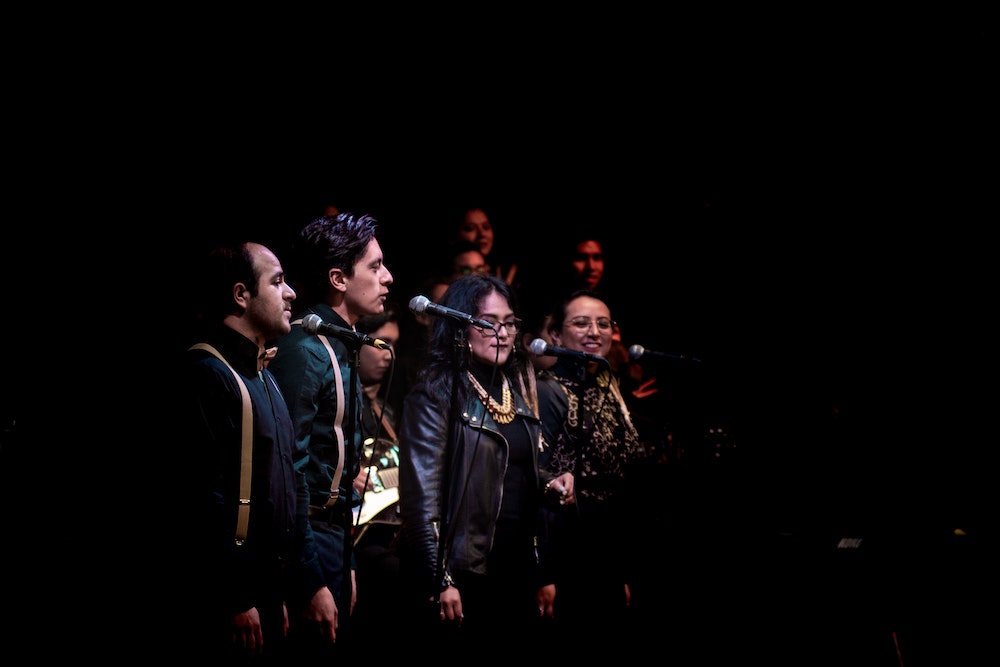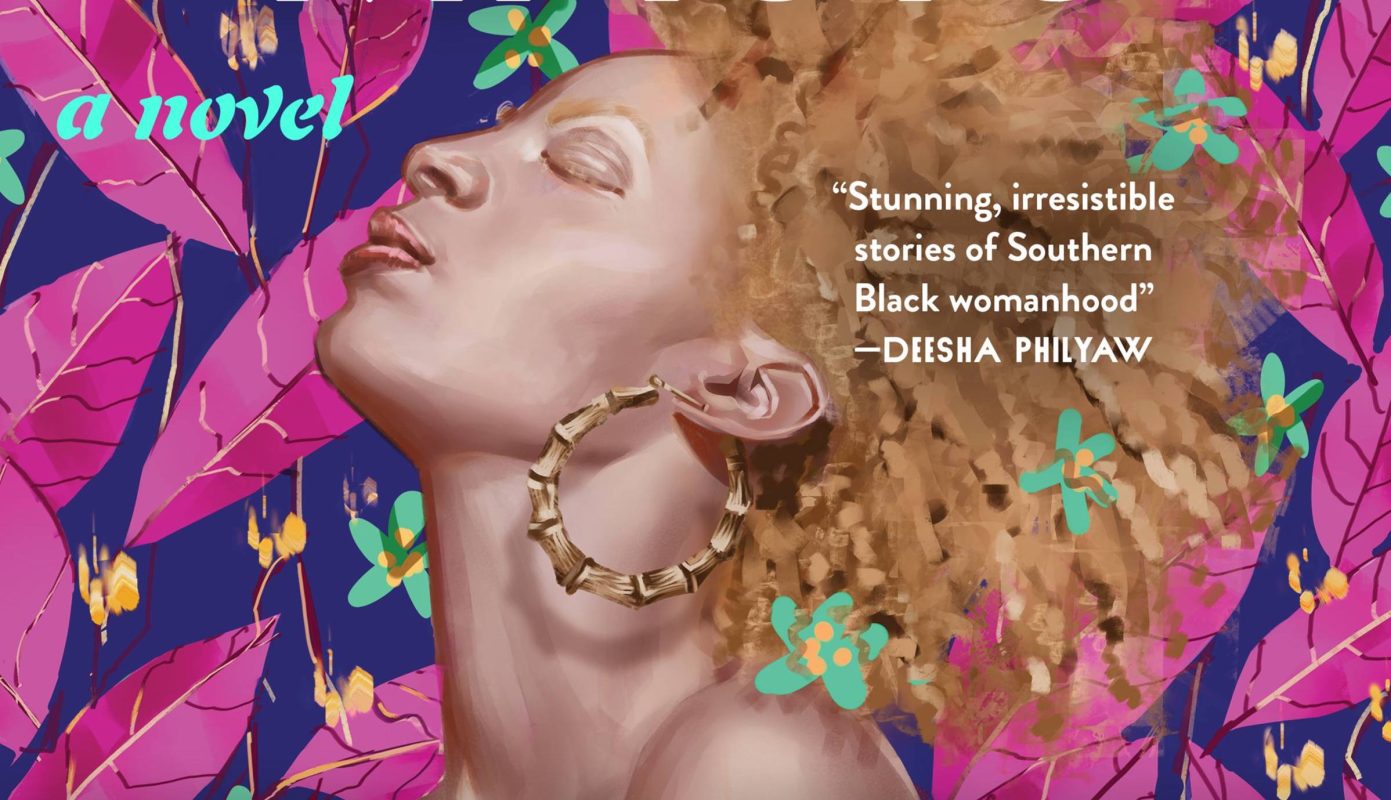Reading Lists
7 Books Featuring a Chorus of Voices of Color
Kimberly Garza, author of "The Last Karankawas," recommends stories carrying the mosaic voices of communities of color

One of my favorite stories about my great-uncle, Tío Roy, involves an argument he had with his first wife. (Or maybe she was his second. Or one of his girlfriends. My late tío had a long and interesting life.) Tía Whomever was complaining he spent too much time with his family and away from her—admittedly, we are a closely bound clan, a fact Tío Roy was only too happy to illustrate. “Mira,” he said, “I can’t help it that my family’s like this.” He held his hand up to her face, showing her his fingers pressed tightly together. “Yours? Yours is like this.” He spread his fingers wide as a starfish.
My relatives repeat Tío’s story often; we laugh and mimic the gesture that has since become family canon. But as a writer, I come back to the emotions beneath it. You are like this, but we are like this. The individualism of fingers spread, the unity of them together. Those two concepts, individualism and unity, seep into the fabric of who I am and what I write. And when I wrote The Last Karankawas, my debut novel about a close-knit community of Filipino- and Mexican Americans in Galveston, Texas, those concepts seeped into the form as well. My novel, you see, is made up of short stories. My tío’s hand with those fingers closed tight.
Linked story collection. Novel-in-stories. Story cycle. Mosaic, kaleidoscope, Greek chorus. A book comprised of multiple tales and narrators has almost as many names; I promise you I have heard and probably used them all. (White male) American writers like Sherwood Anderson and William Faulkner are often credited with popularizing the form in the twentieth century as a way of depicting places—like Winesburg, Ohio or Yoknapatawpha County—through the collected stories of the people who exist there. Even now, it’s common to see story cycles bound together by a shared place (see: my novel and Galveston). But scholar Sandra Zagarell described the nineteenth-century village sketchbook, a predecessor to the story cycle, as a “narrative of community.” To which I say: hell yes.
Narrative of community makes room for people connected by concepts other than place. Communities like my Filipino and Tejano families, whose connections exist beyond location; or those whose bonds to a place have been disrupted by colonialism or slavery or migration or disaster. What literary form can better depict the ties that bind communities like ours? A single narrator, even an omniscient third-person voice, shows only one fractal of the larger image, or it keeps us at a distance. But individual stories woven and layered—we see the whole picture, we can live within them all. A novel in many voices can show not just a place but a culture, not just a shared setting but a shared history and identity and blood. We can pass down individual tales while also telling a greater one. When my family talks about Tío Roy, we laugh; we spread our fingers wide and close them back again. We weave his story with ours, and speak them both.
Below are seven books with multiple narrators, each carrying the voices of a community of color, and, interestingly enough, each also a debut. Some are called novels, some story collections. Some have chapters or fragments that are clearly and thoroughly linked; others are bound by only the barest, Easter-eggiest thread. But each bursts out of the gate brazenly, beautifully straddling the border between novel and story collection—becoming something neither, and maybe something more.
Lot by Bryan Washington
In Washington’s searing story collection, the obvious link is place: sprawling, frustrating, fascinating Houston, Texas (nothing but love, H-town). Each story is named for a different neighborhood or street—Shepherd, Alief, Peggy Park—but the city’s hold on the book goes deeper than setting. The Houstonians depicted here are diverse, often from marginalized groups: Black or Latinx, immigrants or natives, many identifying as LGBTQ+. Though all from different neighborhoods, they navigate similar struggles with sexuality, identity, family, or circumstance. An immigrant seeking work is taken under the wing of a drug dealer; the residents of an apartment complex witness a love triangle gone wrong; two friends find a chupacabra near Buffalo Bayou. Woven through the book is a linked series that includes the titular story, featuring a young, unnamed gay man, the child of a Black mother and a Latino father, coming of age in the Houston he calls home.
There There by Tommy Orange
Urban Indians, as the opening prologue of Orange’s extraordinary novel identifies them, are the lifeblood of this book told from alternating characters’ perspectives. The dozen-strong cast includes scrappy Opal Viola Victoria Bear Shield and her newly sober sister, Jacquie Red Feather; Dene Oxendene, an artist working with a grant to record Native stories; and Tony Loneman, a young man whose life has been defined by fetal alcohol syndrome. Shifting between points of view (from limited third-person to first and even, it seems, to the voice of Orange himself occasionally), the characters weave together in surprising ways. Their lives spiral closer until they converge on the Big Oakland Powwow, and then collide in a startling climax. Through Dene, as well as the multiple-narrator form itself, Orange unflinchingly depicts the ways Native stories have been silenced or lost, and the painstaking effort it takes to bring them back to the spotlight.
Sabrina & Corina by Kali Fajardo-Anstine
Early in the first story of Fajardo-Anstine’s exquisite collection, a character tells his daughter, “Sometimes a person’s unhappiness can make them forget they are a part of something bigger, something like a family, a people, even a tribe.” He is speaking of the girl’s wayward mother, but he could be speaking of many people in these stories, or of the external forces working relentlessly against them. The mythos of the American West—fevered, flawed—looms large over the Colorado setting here, but Fajardo-Anstine’s Latina characters of Indigenous ancestry are survivors, moving forward amidst struggle and loss. An eighth-grade girl watches along with her town as Native artifacts from a nearby site are publicly unearthed; an elderly woman packs up her home after a fatal break-in and reflects on the ebbs and flows of her life; and in the title story, a grieving young woman remembers her magnetic cousin, closer than a sister, the latest casualty in a family beleaguered by violence. That family, the Cordovas, appears repeatedly throughout the book, just one of the intricate ways the women in these stories are bound together.
Homegoing by Yaa Gyasi
In eighteenth-century Ghana, beautiful Fante girl Effia marries a British governor and moves into Cape Coast Castle. In the dungeon below Effia’s new home sits her Asante half-sister Esi, a captive awaiting transport as a slave to America. Thus begins Gyasi’s blazing, many-voiced novel, tracking the sisters—unknown to one another—and their respective family lines across two continents and many, many years. The beauty and cruelty of Gyasi’s twin narratives lie in their parallels, the way the individual experiences of Esi and Effia’s descendants serve as warped reflections of each other. The stories we get—snippets of the characters’ lives—are frustratingly short, cut off by violence or staccatoed by circumstance, migration, and politics. Yet Esi and Effia’s lines continue, generation by generation, until they weave together in a present-day chance (or fated) meeting. The connections between the characters go beyond just their shared families. In brief yet rich stories, Gyasi depicts how trauma is passed down over centuries, how struggles and strengths can be inherited.
Barefoot Dogs by Antonio Ruiz-Camacho
The sudden disappearance of José Victoriano Arteaga—patriarch of a wealthy Mexico City family—is the catalyst for his family’s fracturing in Ruiz-Camacho’s electric linked collection. After horrific clues emerge about José Victoriano’s fate, the Arteagas scatter across the globe. Each story examines the ripples of that incident from a different angle, whether it is Arteaga’s grandson learning to swim and bear the new weight of grief in Palo Alto, California; his mistress, anxious and left behind in Mexico, forced to reach out to the Arteagas for news; or his son, a new father himself, wandering the streets of Madrid with his sick dog. Ruiz-Camacho plays with voice and time, as well as setting, in each story, moving around the world and across the branches of this uprooted family tree. Buoyed by their privilege yet isolated all the same, the scattered Arteagas’ unity lies in their shared unraveling, how their father’s loss defines the new lives they must build without him.
America Is Not the Heart by Elaine Castillo
Perhaps Hero de Vera is the protagonist of Castillo’s unflinching yet tender first novel, the saga of a Filipino family forming new roots in the United States—if so, it’s simply because we spend the most time with her. The close third-person voice carries us along with thirty-something, disillusioned Hero for the majority of the book; we watch as she adjusts to Bay Area life, slips into the role of caretaker for her precocious young cousin Roni, and dodges questions and memories of her recent past in the political tumult of the 1990s-era Philippines. But two crucial segments secure this book in multiple-narrator territory, and both are in the second person. In the prologue, we learn the untold story of Hero’s aunt Paz, a feisty Pangasinense woman whose years with the de Veras and in America have sapped her spirit. (“You’ve been foreign all your life,” the narrator says of Paz, the you. “When you finally leave, all you’re hoping for is a more bearable kind of foreignness.”) And the second-person voice appears once again in a later section, this time whispering the inner thoughts of Hero’s girlfriend, Rosalyn. Even the title—a riff on Filipino native son Carlos Bulosan’s foundational 1946 text, America Is in the Heart—situates Castillo’s narrative as part of something larger, a striking and singular note in an ongoing song.
Of Women and Salt by Gabriela Garcia
“Jeanette, tell me that you want to live,” Carmen begs her daughter, who is crumbling under addiction, in the opening sentence of Garcia’s hypnotic novel. They are just two of the titular women whose lives are shaped by migration and displacement, trauma and loss. In fractured vignettes that span from nineteenth-century Cuban cigar-rolling factories to an ICE detention center in Texas, Garcia moves back and forth in time between Carmen and Jeanette, as well as three generations prior, to Carmen’s homeland of Cuba. Garcia also ties their matrilineal family to another mother-daughter pair in Miami, immigrants from El Salvador whose lives will be inextricably bound to Carmen and Jeanette in ways they can’t foresee. Deftly moving across space and timelines, Garcia depicts her characters’ complicated lives from their own perspectives as well as those of their mothers and/or daughters; she spotlights the many stories lived by Latina women, the histories spoken and the many left unsaid.









